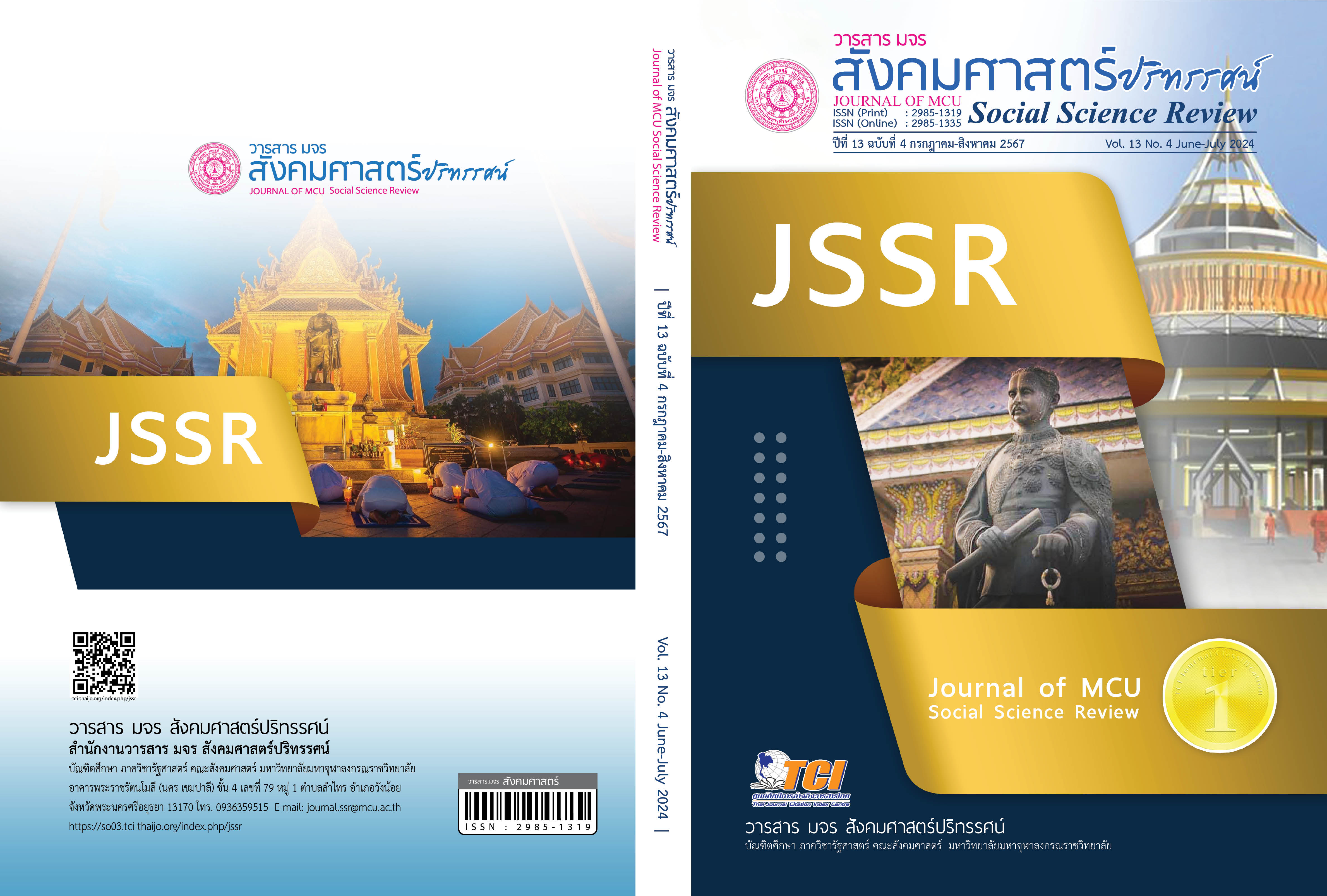รูปแบบการจัดการศูนย์ฝึกกีฬาโปโลน้ำสมาคมกีฬาว่ายน้ำแห่งประเทศไทย
คำสำคัญ:
ศูนย์ฝึกกีฬาโปโลน้ำ, รูปแบบการจัดการ, สมาคมกีฬาว่ายน้ำแห่งประเทศไทยบทคัดย่อ
บทความวิจัยนี้มีวัตถุประสงค์ 1. ศึกษาปัญหา และ 2. สร้างรูปแบบการจัดการศูนย์ฝึกกีฬาโปโลน้ำสมาคมกีฬาว่ายน้ำแห่งประเทศไทย โดยมีขั้นตอนการวิจัย 2 ขั้นตอน ขั้นตอนที่ 1 การศึกษาปัญหาการจัดการศูนย์ฝึกกีฬาโปโลน้ำสมาคมกีฬาว่ายน้ำแห่งประเทศไทยเก็บรวบรวมข้อมูลโดยใช้แบบสอบถามปัญหาการจัดการศูนย์ฝึกกีฬาโปโลน้ำในกลุ่มผู้ฝึกสอน ผู้ช่วยผู้ฝึกสอน และผู้ปกครอง จำนวน 52 คน และแบบสัมภาษณ์กลุ่มผู้บริหารสมาคม จำนวน 5 คน วิเคราะห์ข้อมูลโดยการหาค่าเฉลี่ย ส่วนเบี่ยงเบนมาตรฐาน และการวิเคราะห์เนื้อหา ขั้นตอนที่ 2 การสร้างและตรวจสอบรูปแบบการจัดการศูนย์ฝึกกีฬาโปโลน้ำสมาคมกีฬาว่ายน้ำแห่งประเทศไทย โดยผู้วิจัยยกร่างรูปแบบการจัดการศูนย์จากผลการศึกษาในขั้นตอนที่ 1 ประกอบกับผลการศึกษาเอกสารและงานวิจัยที่เกี่ยวข้อง และตรวจสอบร่างรูปแบบการจัดการศูนย์โดยการสนทนากลุ่มผู้เชี่ยวชาญ จำนวน 9 คน
ผลการวิจัยพบว่า 1. ปัญหาการจัดการศูนย์ฝึกกีฬาโปโลน้ำสมาคมกีฬาว่ายน้ำแห่งประเทศไทยโดยรวมอยู่ในระดับมาก ปัญหาด้านปัจจัยนำเข้าและด้านกระบวนการอยู่ในระดับมาก ในขณะที่ปัญหาด้านผลผลิตยู่ในระดับปานกลางและ 2. รูปแบบการจัดการศูนย์ฝึกกีฬาโปโลน้ำสมาคมกีฬาว่ายน้ำแห่งประเทศไทยเป็นรูปแบบการจัดการเชิงระบบประกอบด้วย 3 องค์ประกอบหลัก ได้แก่ ปัจจัยนำเข้า กระบวนการ และผลผลิต โดยองค์ประกอบปัจจัยนำเข้าประกอบด้วย บุคลากร งบประมาณ สถานที่ วัสดุอุปกรณ์และสิ่งอำนวยความสะดวก และการจัดการ องค์ประกอบกระบวนการประกอบด้วย การวางแผน การจัดองค์กร การนำองค์กร และการควบคุม และองค์ประกอบผลผลิต ประกอบด้วย ผลผลิตด้านประสิทธิภาพ และผลผลิตด้านประสิทธิผล
เอกสารอ้างอิง
กระทรวงท่องเที่ยวและกีฬา. (2564). แผนยุทธศาสตร์การกีฬาแห่งประเทศไทย (พ.ศ. 2564-2570). กรุงเทพฯ: การกีฬาแห่งประเทศไทย.
_____. (2566). แผนพัฒนาการกีฬาแห่งชาติ ฉบับที่ 7 (2566 – 2570). กรุงเทพฯ: การกีฬาแห่งประเทศไทย.
กิตติ์นิพัทธ์ สุขะจิรโชติ และคณะ. (2564). สภาพและแนวทางการจัดการศูนย์ฝึกกีฬาเรือพายส่วนภูมิภาคของสมาคมกีฬาเรือพายแห่งประเทศไทย. วารสารศิลปะศาสตร์ มหาวิทยาลัยแม่โจ้, 9(2), 190-206.
จันทรานี สงวนนาม. (2553). ทฤษฎีแนวปฏิบัติการบริหารสถานศึกษา. กรุงเทพฯ: บุ๊คพอยท์.
สมาคมกีฬาว่ายน้ำแห่งประเทศไทย. (2563). แผนยุทธศาสตร์สมาคมกีฬาว่ายน้ำแห่งประเทศไทย (2563-2567). สืบค้น 15 ธันวาคม 2565, จาก http://swimming.or.th/Vision
_____. (2564). เปิดกลยุทธ์โปโลน้ำ ปั้นฝันยืนหนึ่งอาเซียน ท็อปทรีในเอเชีย. สืบค้น 15 ธันวาคม 2565 จาก https://shorturl.asia/G32wZ
Fritz, P. et al. (2022). Hungarian male water polo players’ body composition can predict specifc playing positions and highlight diferent nutritional needs for optimal sports performance. Retrieved March 10, 2023, from https://shorturl.asia/kUc94
Kang, S. & Svensson, P. (2022). The benefits and challenges of shared leadership in sport for development and peace collaboratives. Retrieved March 10, 2023, from https://www.tandfonline.com/doi/full
Melchiorri, G. et al. (2010). Physiological profile of water polo players in different competitive levels. Retrieved March 10, 2023, from https://shorturl.asia/V1DLp
Montgomery, E. G. (2014). Talent Management Vulnerability in Global Healthcare Value Chains: A General Systems Theory Perspective. Retrieved March 10, 2023, from https://shorturl.asia/3n91w
Peachey, J. W. et al. (2020). Sport-for-development: A comprehensive analysis of theoretical and conceptual advancements. Sport management Review, 23(5), 783-796.
Wegner, C. E. et al. (2022). Understanding experiences with capacity building in the sport for development context. Retrieved March 10, 2023, from https://www.tandfonline.com/doi/full
ดาวน์โหลด
เผยแพร่แล้ว
รูปแบบการอ้างอิง
ฉบับ
ประเภทบทความ
สัญญาอนุญาต
ลิขสิทธิ์ (c) 2024 วารสาร มจร สังคมศาสตร์ปริทรรศน์

อนุญาตภายใต้เงื่อนไข Creative Commons Attribution-NonCommercial-NoDerivatives 4.0 International License.
เพื่อให้เป็นไปตามกฎหมายลิขสิทธิ์ ผู้นิพนธ์ทุกท่านต้องลงลายมือชื่อในแบบฟอร์มใบมอบลิขสิทธิ์บทความให้แก่วารสารฯ พร้อมกับบทความต้นฉบับที่ได้แก้ไขครั้งสุดท้าย นอกจากนี้ ผู้นิพนธ์ทุกท่านต้องยืนยันว่าบทความต้นฉบับที่ส่งมาตีพิมพ์นั้น ได้ส่งมาตีพิมพ์เฉพาะในวารสาร มจร สังคมศาสตร์ปริทรรศน์ เพียงแห่งเดียวเท่านั้น หากมีการใช้ภาพหรือตารางหรือเนื้อหาอื่นๆ ของผู้นิพนธ์อื่นที่ปรากฏในสิ่งตีพิมพ์อื่นมาแล้ว ผู้นิพนธ์ต้องขออนุญาตเจ้าของลิขสิทธิ์ก่อน พร้อมทั้งแสดงหนังสือที่ได้รับการยินยอมต่อบรรณาธิการ ก่อนที่บทความจะได้รับการตีพิมพ์ หากไม่เป็นไปตามข้อกำหนดเบื้องต้น ทางวารสารจะถอดบทความของท่านออกโดยไม่มีข้อยกเว้นใดๆ ทั้งสิ้น





